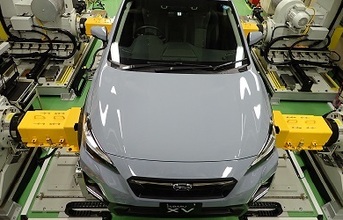
"By using NI PXI products and LabVIEW, we were able to completely implement a customized HIL system in just one to two weeks and develop our software in-house," said Daisuke Umiguchi, Electrified Power Unit Research and Experiment Dept., Subaru Corporation. "This helped us keep product purchasing costs to around one-third of the cost of adopting solutions from other companies, and, because of our familiarity with LabVIEW, keep our software development costs to around one-sixth of the cost of commissioning an outside developer."
Subaru further outfitted its vehicle test solution with a controller-driven dynamometer by HORIBA and CarSim vehicle dynamics simulation software deployed by Virtual Mechanics. Together, they produce load conditions equivalent to those generated on actual roads. This driving system transmits the calculated values to the NI HIL system in real time to create closed-loop control between the models on the HIL system and the driving system. As a result, the HIL interaction system can apply the appropriate load to the vehicle throughout the tests.
Subaru plans to use this test system at the final stages of development for electric vehicles as a final quality check, and eventually expand its use for all car types. By adopting this system, Subaru anticipates reducing labor hours by half compared to conventional methods.
END


























